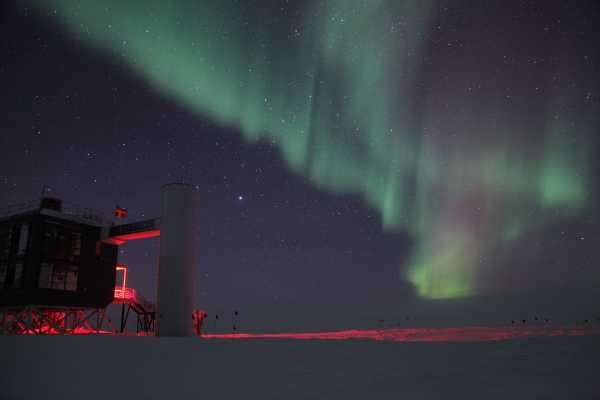
Here’s something you may not know about the South Pole: Scientists have turned the ice there into an observatory that can detect some of the most elusive bits of matter in the universe.
It’s called the IceCube Neutrino Observatory, and it’s built directly into the ice beneath the South Pole. Essentially, the observatory is a 1-cubic kilometer (about 1.3 billion cubic yards) block of crystal-clear ice surrounded by specialized sensors. These sensors are set up to detect when subatomic particles called neutrinos crash into the Earth.
Neutrino detections excite scientists because these particles are often shot at us by cosmic objects we don’t totally understand (like black holes). Often neutrinos hit the Earth with an energy so strong, scientists don’t know what could have possibly propelled them.
Normally, neutrinos don’t interact with other forms of matter much at all. They arrive from space and usually sail through our planet like an X-ray passes through soft flesh. But every once in a while, a neutrino will hit into an atom of that ice, and breaks it apart, there’s a momentary flash of an eerie blue light. It’s that light that sets off the observatory’s sensors.
The National Science Foundation is set to reveal some cool new results from the IceCube Thursday morning, at a 11 am Eastern press conference. (Read Vox’s story about the results here.) They haven’t released many details, but are saying it’s a breakthrough in “multi-messenger astrophysics,” meaning observations that are corroborated by observatories that detect electromagnetic radiation as well as other forces that permeate the universe.
Speakers include France Córdova, the director of the National Science Foundation, and Francis Halzen, the principal investigator of IceCube. You can watch along right here. Fun!
Related
An enormous ice cube at the South Pole is revealing mysteries about the universe
Sourse: vox.com






